Are you ready to unleash the growing gardener within you? Discover the secrets to creating a flourishing garden with these expert gardening tips. Whether you’re a beginner or have some experience, these tips will help you transform your outdoor space into a thriving oasis.
Key Takeaways:
- Start by deciding what type of garden you want and start small until you gain more experience.
- Ensure your garden receives 6-8 hours of full sun each day or choose shade-tolerant plants.
- Prepare your garden bed by removing weeds and sod and enrich the soil with organic matter.
- Choose plants that are adapted to your climate, soil, and sunlight conditions.
- Consider easy-to-grow plants like annuals, perennials, and vegetables suited for beginners.
Creating a thriving garden takes time, patience, and a little bit of know-how. By following these tips, you’ll be well on your way to nurturing a beautiful and bountiful garden. So, put on your gardening gloves and get ready to watch your efforts blossom!
Choosing the Right Type of Garden for You
As a beginner gardener, it’s essential to choose the right type of garden that aligns with your interests and fits your space. Let’s explore the various options and how they can enhance your green oasis.
If you have a small outdoor area or limited space, a container garden or balcony garden might be the perfect choice for you. You can use pots, hanging baskets, or vertical planters to grow a variety of plants, from herbs and vegetables to beautiful flowers. Container gardening allows you to easily control the soil quality and provides the flexibility to move your plants around for optimal sunlight exposure.
If you have a larger space and want to grow your own fresh produce, a vegetable garden is a great option. You can start small with a few raised beds or even dedicate a portion of your existing garden to growing vegetables. Plan the layout carefully, considering factors like sunlight exposure, water accessibility, and the growth habits of different vegetables. With a vegetable garden, you’ll have the joy of harvesting your own nutritious and delicious vegetables right from your backyard.
For those who appreciate the beauty and fragrance of flowers, a flower garden is a wonderful choice. You can create a traditional flower bed with a mix of annuals and perennials, or choose a specific theme like a rose garden or a wildflower meadow. Flower gardens not only add color and charm to your outdoor space but also attract beneficial pollinators like bees and butterflies. Consider incorporating native plants into your flower garden to support local ecosystems and promote biodiversity.
| Type of Garden | Advantages |
|---|---|
| Container Garden/Balcony Garden | – Suitable for small spaces – Easy to maintain and move – Can grow a variety of plants |
| Vegetable Garden | – Provides fresh and organic produce – Promotes self-sufficiency – Offers a rewarding gardening experience |
| Flower Garden | – Adds beauty and fragrance to your outdoor space – Attracts pollinators – Provides a sense of tranquility |
My Personal Favorite: The Vegetable Garden
As a passionate gardener myself, my personal favorite is the vegetable garden. There’s something incredibly satisfying about growing your own food and knowing exactly where it comes from. With a vegetable garden, you have the opportunity to cultivate a wide variety of vegetables, from leafy greens like spinach and lettuce to vibrant tomatoes and peppers. Plus, there’s nothing quite like the taste of freshly harvested vegetables that you’ve nurtured from seed to plate.

Whichever type of garden you choose, remember that gardening is a journey of learning and experimentation. Don’t be afraid to start small and gradually expand as you gain confidence and experience. With time, patience, and a little bit of green thumb magic, your garden will thrive and bring you immense joy.
Maximizing Sunlight and Soil Preparation
To ensure your plants thrive, understanding gardening techniques for maximizing sunlight and properly preparing the soil is fundamental. Let’s dive into these crucial aspects of plant care.
First, let’s discuss the importance of sunlight in garden growth. Most plants need at least 6-8 hours of full sun each day to flourish. If you have limited sunlight in your garden, don’t worry! There are plants that can tolerate shade and still thrive. Consider shade-loving plants like hostas, ferns, and impatiens, which can add beauty to those shady spots in your garden.
Next, let’s talk about soil preparation. Before planting, it’s essential to ensure your soil is nutrient-rich and well-draining. Begin by removing any weeds and sod from your garden bed. You can use a garden fork or a tiller to loosen the soil, allowing for better drainage and root penetration. If you want to avoid tilling, you can try the lasagna gardening method. This technique involves layering organic materials like newspaper, compost, and straw directly on top of the existing soil to create a nutrient-rich soil bed for your plants.
After preparing your garden bed, it’s crucial to test your soil’s pH level and nutrient content. You can purchase a soil testing kit from your local garden center or use a soil testing service. Based on the results, you may need to amend your soil with organic matter such as compost, peat moss, or aged manure to improve its structure and fertility. This will provide the necessary nutrients for your plants to grow and thrive.
By maximizing sunlight and properly preparing your soil, you are setting the foundation for a successful garden. Remember to choose plants that are suited to your sunlight conditions and amend your soil accordingly. With these gardening techniques in mind, you’ll be well on your way to creating a thriving garden.
Table: Sunlight Requirements for Common Garden Plants
| Plant | Sunlight Requirements |
|---|---|
| Tomato | Full sunlight (6-8 hours) |
| Hosta | Partial to full shade |
| Impatiens | Partial to full shade |
| Pepper | Full sunlight (6-8 hours) |
| Marigold | Full sunlight (6-8 hours) |
As you can see from the table above, different plants have varying sunlight requirements. It’s essential to choose plants that align with the amount of sunlight your garden receives to ensure their optimal growth.
Remember, sunlight and soil preparation are just the beginning. Stay tuned for the next section, where we’ll dive into selecting plants adapted to your climate. Happy gardening!
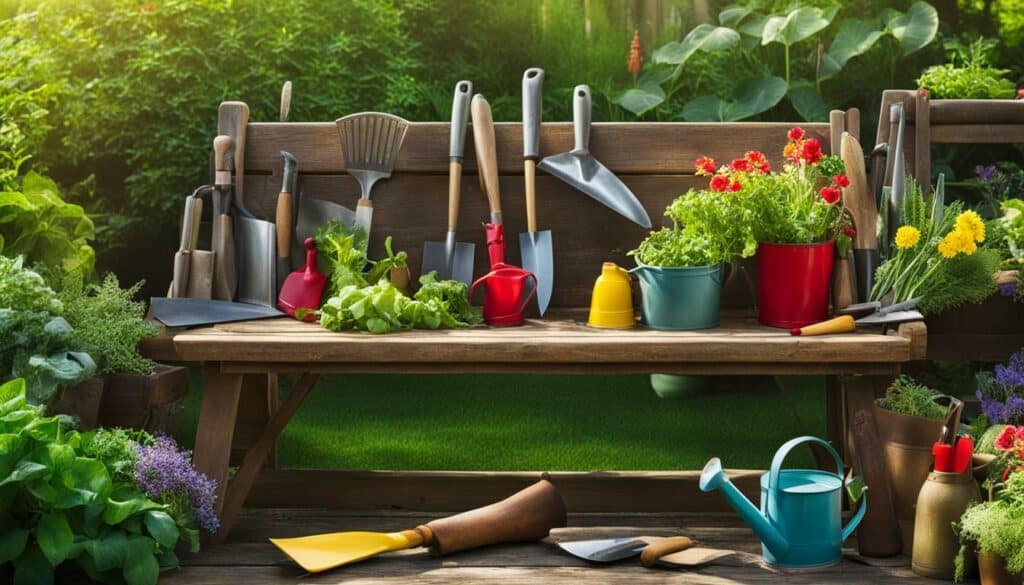
Selecting Plants Adapted to Your Climate
Choosing plants adapted to your climate is key to successful gardening. Let’s explore tips for selecting the right plants and some foolproof options for beginners.
When it comes to gardening, the first step is to consider the climate in your area. Different plants have different temperature and humidity requirements, so it’s important to choose plants that can thrive in your specific conditions. Whether you live in a hot and dry desert climate or a cool and humid coastal region, there are plants that will flourish in your garden.
One way to determine which plants are adapted to your climate is by referring to the USDA Plant Hardiness Zone Map. This map divides the United States into different zones based on average winter temperatures. By identifying your specific zone, you can narrow down your plant choices to those that are known to survive and thrive in your area.
For beginners, it’s always a good idea to start with plants that are known for their adaptability and resilience. Some foolproof options include native plants, which have evolved to thrive in your specific climate, and hardy perennials that can withstand a range of conditions. Examples of native plants include coneflowers, native grasses, and wildflowers. As for perennials, plants like lavender, sedum, and hostas are known for their ability to thrive in various climates.
| Plant | Climate | Sunlight | Watering |
|---|---|---|---|
| Calendula | Adaptable | Full sun to partial shade | Regular watering |
| Zinnias | Adaptable | Full sun | Regular watering |
| Black-eyed Susans | Adaptable | Full sun to partial shade | Regular watering |
| Daylilies | Adaptable | Full sun to partial shade | Regular watering |
| Cucumbers | Adaptable | Full sun | Regular watering |
| Tomatoes | Adaptable | Full sun | Regular watering |
By selecting plants adapted to your climate, you’ll give yourself a head start in creating a successful garden. Remember to consider the specific sun and watering requirements of each plant, as these can vary even within the same climate zone. With a little research and planning, you’ll soon have a garden filled with thriving plants that bring joy and beauty to your outdoor space.
Starting Seeds or Transplanting Young Plants
Whether you prefer starting plants from seeds or buying young plants, understanding the process and best practices is essential. Let’s explore these two methods of plant care.
Starting plants from seeds is a cost-effective option that allows you to have a wider variety of plants in your garden. To get started, you’ll need containers, seed starting mix, and proper lighting. Follow the instructions on the seed packet for planting depth and spacing. Keep the soil moist and provide adequate lighting to promote germination. Once the seedlings have grown a few sets of true leaves, you can transplant them into larger pots or directly into the garden.
On the other hand, if you prefer convenience and want to skip the seed starting process, buying young plants is a great option. Visit local nurseries or garden centers to find a variety of plants suitable for your garden. When choosing young plants, look for ones that are healthy and disease-free. Before transplanting them, make sure to gently loosen the root ball and water the plants well. When planting the young plants, be mindful of spacing recommendations and provide proper support for vining plants.
Pros and Cons:
| Starting from Seeds | Buying Young Plants |
|---|---|
| Allows for more variety | Convenient and time-saving |
| Cost-effective | Less risk of failure |
| Requires more time and effort | Less control over plant quality |
Whichever method you choose, remember to provide proper care and maintenance to ensure the success of your plants. Water consistently, provide adequate sunlight, and protect your plants from pests and diseases. With patience and practice, you’ll soon enjoy the rewards of a flourishing garden.
By understanding the process of starting seeds or transplanting young plants, you can confidently choose the method that suits your gardening style. Experiment with both options to see which one works best for you. Happy gardening!
Watering, Mulching, and Garden Maintenance
Effective watering, proper mulching, and regular garden maintenance are vital for the health and longevity of your plants. Let’s delve into these important aspects of plant care.
When it comes to watering your garden, it’s important to do so consistently and deeply. Water your plants at their base to ensure the moisture reaches the roots, avoiding wetting the foliage as it can lead to disease. A good rule of thumb is to water your garden in the morning or late afternoon, when the temperatures are cooler and the water is less likely to evaporate quickly. Pay attention to the specific watering needs of different plants, as some may require more or less water than others.
Mulching is another essential practice that can benefit your garden in multiple ways. Adding a layer of organic mulch, such as wood chips or straw, around your plants helps to retain moisture, suppress weed growth, and regulate soil temperature. Mulch also acts as a natural barrier, protecting the roots of your plants from extreme weather conditions. Be sure to replenish the mulch periodically to maintain its effectiveness.
Garden maintenance is an ongoing task that requires regular attention. Stay on top of weeding, removing any unwanted plants that compete with your garden for nutrients and space. Pruning is necessary to remove dead or diseased branches and promote healthy growth. Keep an eye out for pests and diseases, and take appropriate measures to control them. Regularly inspect your plants for any signs of distress or nutrient deficiencies and address them promptly.
| Task | Frequency |
|---|---|
| Weeding | Weekly |
| Pruning | As needed |
| Pest control | Regular monitoring |
| Soil testing | Annually |
By following these watering, mulching, and garden maintenance practices, you’ll be well on your way to creating a thriving and beautiful garden. Remember to adapt these techniques to suit the specific needs of your plants, as each garden is unique. With proper care and attention, your garden will reward you with lush foliage, vibrant blooms, and bountiful harvests.
The Best Time to Start a New Garden
Timing is crucial when embarking on a new gardening journey. Let’s explore the best time to start a new garden and how to plan for the tools and supplies you’ll need.
When it comes to starting a new garden, spring is often the ideal time. As the temperatures begin to rise and the days get longer, plants thrive in these optimal growing conditions. This is the perfect opportunity to prepare your garden bed, sow seeds, or transplant young plants.
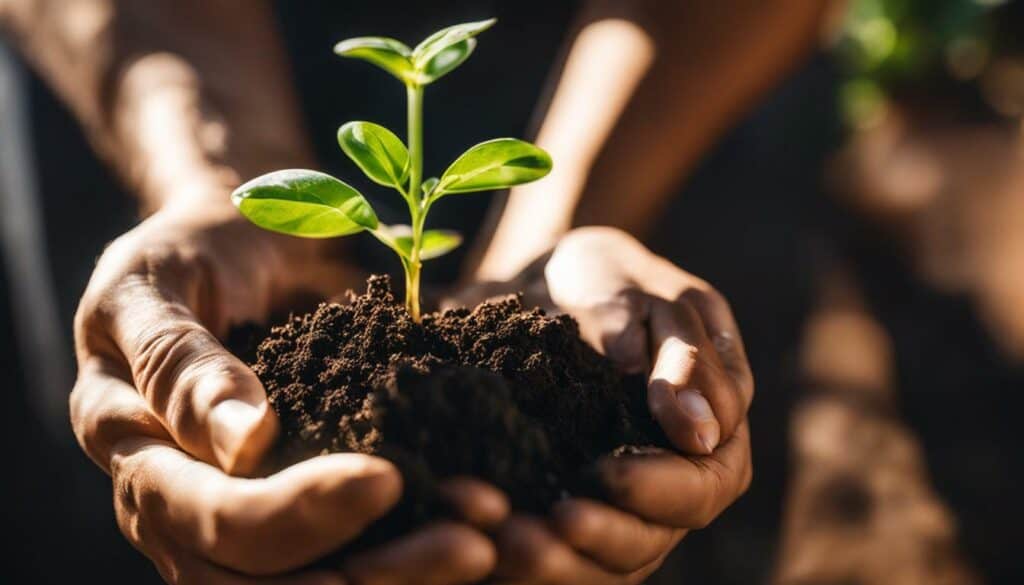
It’s important to plan ahead and gather the necessary tools and supplies before starting your garden. Some essential items include gardening gloves, a trowel, a watering can or hose, and fertilizers or soil amendments. Research the specific needs of the plants you wish to grow to ensure you have the appropriate tools and supplies on hand.
Tools and Supplies Checklist
| Tools | Supplies |
|---|---|
| Gardening gloves | Seeds or young plants |
| Trowel | Watering can or hose |
| Pruning shears | Organic fertilizers or soil amendments |
| Rake | Mulch |
By starting your garden at the right time and having the necessary tools and supplies, you can set yourself up for gardening success. Remember to choose plants that are suited to your climate, provide them with proper care, and enjoy watching your garden thrive throughout the season.
Adding Beauty to Your Garden
Your garden can be not only a place of growth but also a feast for the eyes. Let’s discover how to add beauty and personal style to your green sanctuary.
One way to enhance the visual appeal of your garden is by incorporating flowers. Choose a variety of colors, shapes, and sizes to create a vibrant palette. Consider planting flowers that bloom at different times of the year, ensuring there’s always something in bloom. Include a mix of annuals, perennials, and biennials for continuous color throughout the seasons.
Another way to add beauty is by utilizing garden art. This can include sculptures, decorative stakes, or even wind chimes. Place these art pieces strategically throughout your garden to create focal points and visual interest. You can also repurpose old items like vintage bicycles or wheelbarrows as unique and eye-catching planters.
| Garden Art Ideas | Placement |
|---|---|
| Decorative stakes | Along pathways or near the entrance |
| Sculptures | Amongst tall plants or shrubs |
| Wind chimes | Near seating areas or in a breezy spot |
| Vintage planters | On a porch or patio |
To bring a touch of elegance to your garden, consider adding decorative containers. Choose pots in different shapes, colors, and sizes to create visual interest. Use them to showcase your favorite plants or create stunning focal points. Place them strategically throughout your garden or group them together for a captivating display.
Remember, beauty is subjective, so don’t be afraid to let your personal style shine through. Experiment with different color combinations, textures, and design elements to create a garden that reflects your unique taste and personality. Your garden should be a place that brings you joy and inspires you to spend time outdoors.
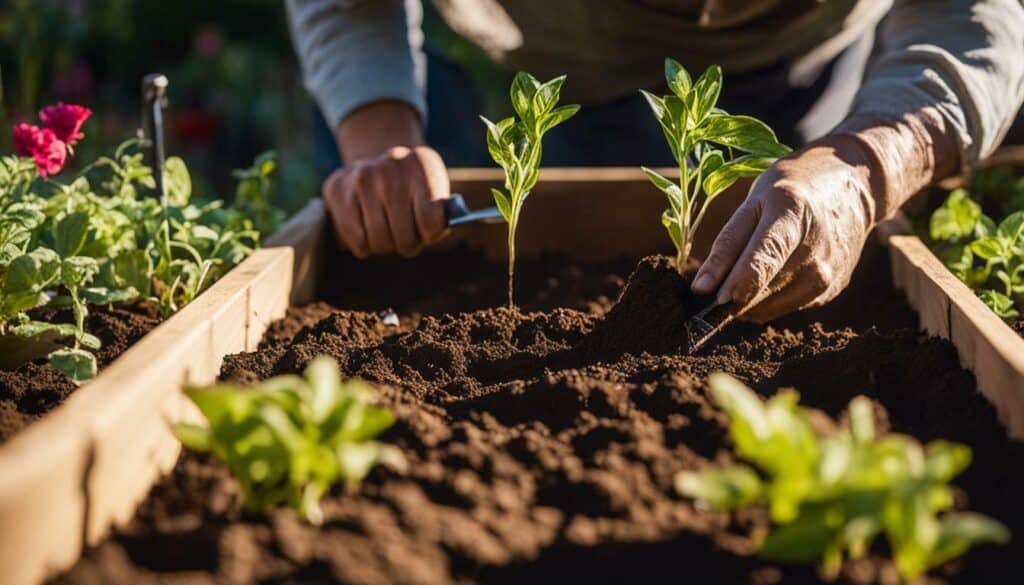
“The greatest fine art of the future will be the making of a comfortable living from a small piece of land.”
– Abraham Lincoln
Troubleshooting Common Garden Issues
Even the most experienced gardeners encounter challenges along the way. Let’s explore common garden issues and the essential supplies you’ll need to tackle them.
Pests: Dealing with pests is a common problem in gardens. To combat pests like aphids, caterpillars, and slugs, you’ll need gardening supplies such as insecticidal soap, neem oil, and organic slug baits. These products can help control pest populations and protect your plants from damage.
Diseases: Plants can be susceptible to various diseases, including fungal infections and bacterial blights. To prevent and treat these diseases, you’ll need gardening supplies like copper fungicide, sulfur dust, and organic disease control sprays. These products can help keep your plants healthy and disease-free.
Nutrient Deficiencies: Plants require essential nutrients for optimal growth. If you notice signs of nutrient deficiencies, such as yellowing leaves or stunted growth, you’ll need gardening supplies like organic fertilizers or specific nutrient additives. These products can help replenish soil nutrients and ensure your plants receive the nutrients they need.
Essential Gardening Supplies for Troubleshooting
| Garden Issue | Essential Supplies |
|---|---|
| Pests | Insecticidal soap, neem oil, organic slug baits |
| Diseases | Copper fungicide, sulfur dust, organic disease control sprays |
| Nutrient Deficiencies | Organic fertilizers, specific nutrient additives |
By having these essential gardening supplies on hand, you’ll be well-prepared to tackle common garden issues and keep your plants thriving.
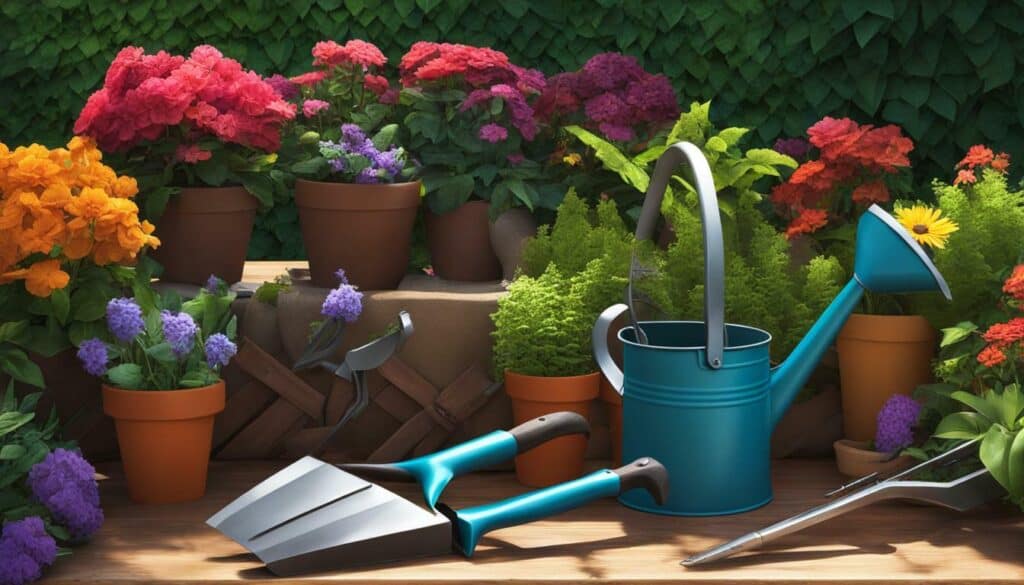
Harvesting and Enjoying the Fruits of Your Labor
There’s nothing quite as satisfying as harvesting and savoring the fruits of your labor. Let’s delve into the art of organic gardening and the joy it brings. Organic gardening is a method of growing plants that focuses on working in harmony with nature, using natural materials and techniques to promote healthy and sustainable growth. By following organic gardening practices, you can create a garden that not only produces delicious and nutritious fruits, vegetables, and herbs but also helps to preserve the environment.
One of the key principles of organic gardening is avoiding the use of synthetic fertilizers, pesticides, and herbicides. Instead, organic gardeners rely on natural alternatives, such as compost, manure, and organic pest control methods, to nourish their plants and keep pests at bay. This not only benefits the health of the plants but also helps to maintain a balanced ecosystem in the garden, supporting beneficial insects and wildlife.
When it comes time to harvest your organic garden, the rewards are truly sweet. Imagine plucking juicy tomatoes from the vine, crisp lettuce leaves for a fresh salad, or fragrant herbs to flavor your favorite dishes. The taste and texture of homegrown produce are unmatched, and you can take pride in knowing exactly how your food was grown. Plus, by growing your own food, you can reduce your carbon footprint by eliminating the need for long-distance transportation.
| Benefits of Organic Gardening | Methods to Use |
|---|---|
| Chemical-free produce | Composting |
| Improved soil health | Natural pest control |
| Support for local ecosystems | Crop rotation |
| Sustainable growing practices | Weed management |

As you harvest your organic garden, take the time to appreciate the beauty and abundance that nature has provided. Share your harvest with friends, family, and neighbors, spreading the joy of homegrown goodness. You can also preserve the excess produce by canning, freezing, or drying it, allowing you to enjoy the flavors of your garden throughout the year.
Organic gardening is a journey that allows you to connect with the earth, nurture living things, and reap the rewards of your efforts. Start small, experiment, and learn from your experiences. With each season, your gardening skills will grow, and your bountiful harvest will be a testament to your dedication and passion for organic gardening.
Conclusion
Congratulations, you’ve embarked on a journey to become a growing gardener! By following these tips, you’ll transform your space into a thriving sanctuary and nurture your passion for gardening.
If you’re new to gardening, start small and choose the type of garden that matches your interests and needs. Whether it’s growing vegetables, herbs, or flowers, there’s something for everyone. Remember to consider your garden’s sunlight requirements and take steps to ensure your plants receive the necessary amount of sunlight each day.
Preparing your garden bed is crucial for plant growth. Remove weeds and sod, enrich the soil with organic matter, and make sure it has the right nutrients for your plants. Selecting plants that are adapted to your climate and soil conditions will increase your chances of success. Don’t forget to water your plants regularly and use mulch to retain moisture and reduce weed growth.
Stay on top of garden maintenance tasks like watering, weeding, pruning, and pest control. Timing is important when starting a new garden, so be sure to plan accordingly and gather the necessary tools and supplies. And don’t forget to add beauty to your garden with colorful flowers, garden art, and decorative containers.
With these tips in mind, you’ll be well on your way to becoming a confident and successful gardener. Enjoy the process, learn from your experiences, and watch your garden thrive. Happy gardening!
How Can I Use the Tips and Techniques in the Ultimate Garden Guide to Create Thriving Gardens?
Discover the endless possibilities of creating flourishing gardens by implementing the tips and techniques outlined in the ultimate tutorial garden guide. From choosing the right soil to mastering proper watering techniques, this comprehensive guide equips you with the knowledge and skills to create thriving outdoor spaces. Whether you’re a seasoned gardener or a beginner, this invaluable resource is your go-to for transforming your garden into a lush and vibrant oasis.
FAQ
Q: What type of garden should I create as a beginner gardener?
A: You can start with a vegetable garden, herb garden, or flower garden. Start small until you gain more experience.
Q: How much sunlight does my garden need?
A: Your garden should receive 6-8 hours of full sun each day. If you have shade, choose plants that can tolerate it.
Q: How do I prepare my garden bed?
A: Remove weeds and sod from your garden bed. Consider using the lasagna gardening method to create rich soil.
Q: How should I choose plants for my garden?
A: Select plants that are adapted to your climate, soil, and sunlight conditions. Consider easy-to-grow plants for beginners.
Q: Should I grow plants from seeds or buy young plants?
A: You can do either. Start plants from seeds or buy young plants to transplant into your garden.
Q: How often should I water my plants?
A: Water your plants regularly, ensuring they receive enough moisture. Use mulch to help retain moisture and prevent weeds.
Q: When is the best time to start a new garden?
A: The best time to start a new garden is usually in the spring. Make sure you have the necessary tools and budget for gardening.
Q: How can I add beauty to my garden?
A: Add flowers, garden art, and colorful pots or containers to enhance the visual appeal of your garden.
Q: What should I do if I encounter common garden issues?
A: Troubleshoot common garden problems like pests, diseases, and nutrient deficiencies. Use recommended gardening supplies as needed.
Q: How can I harvest and enjoy the fruits of my gardening efforts?
A: Harvest your garden produce and enjoy the satisfaction of your hard work. Consider organic gardening practices for a healthier harvest.

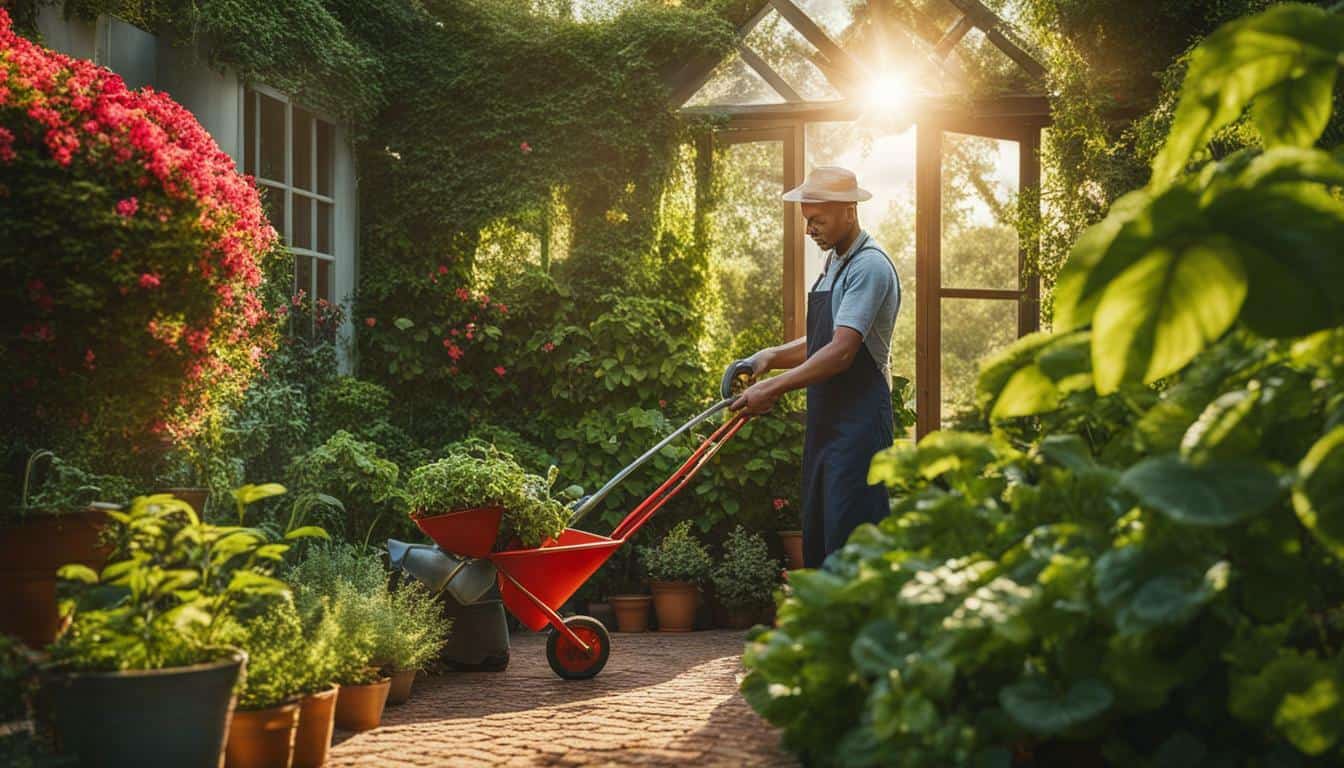



Leave a Reply